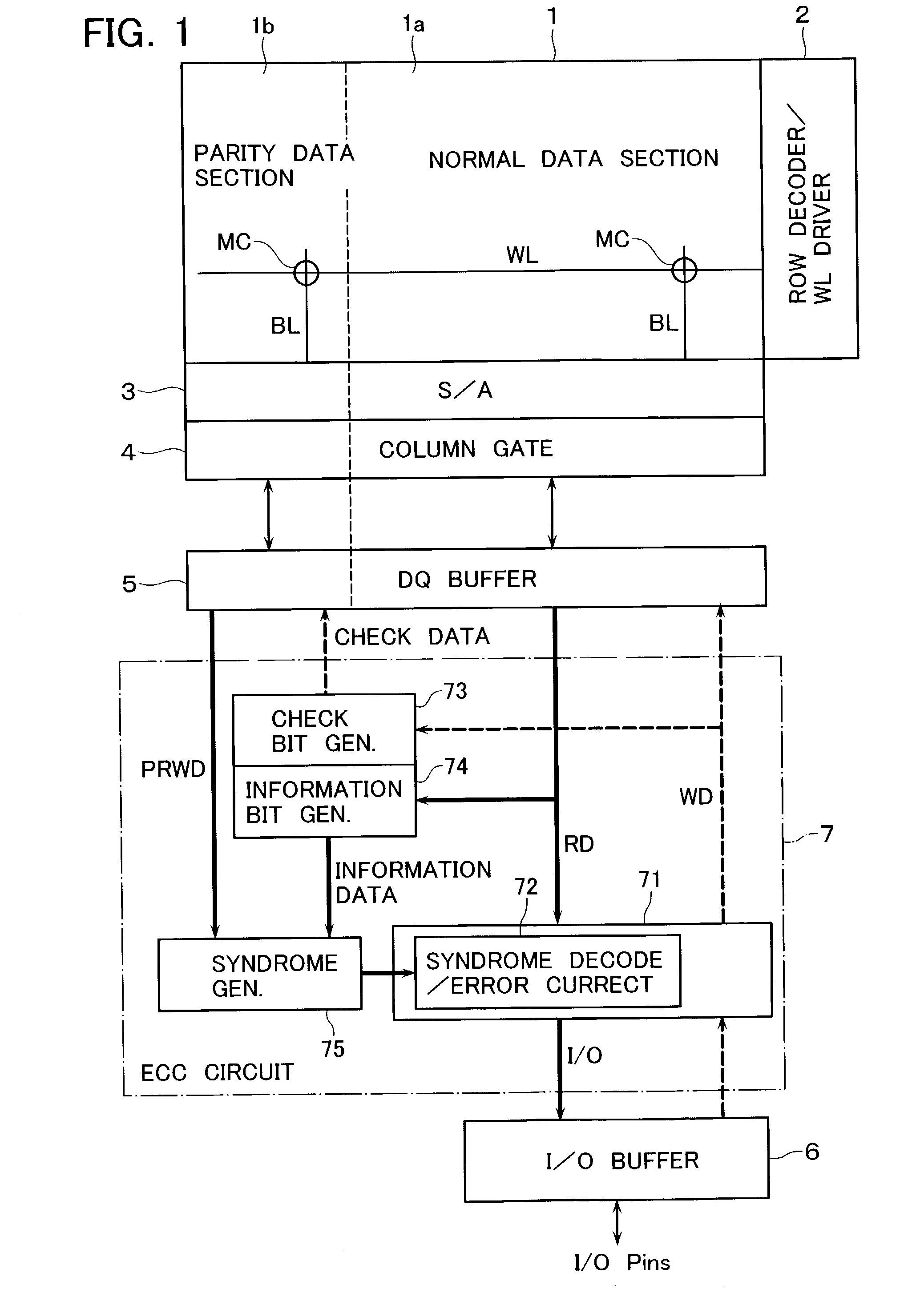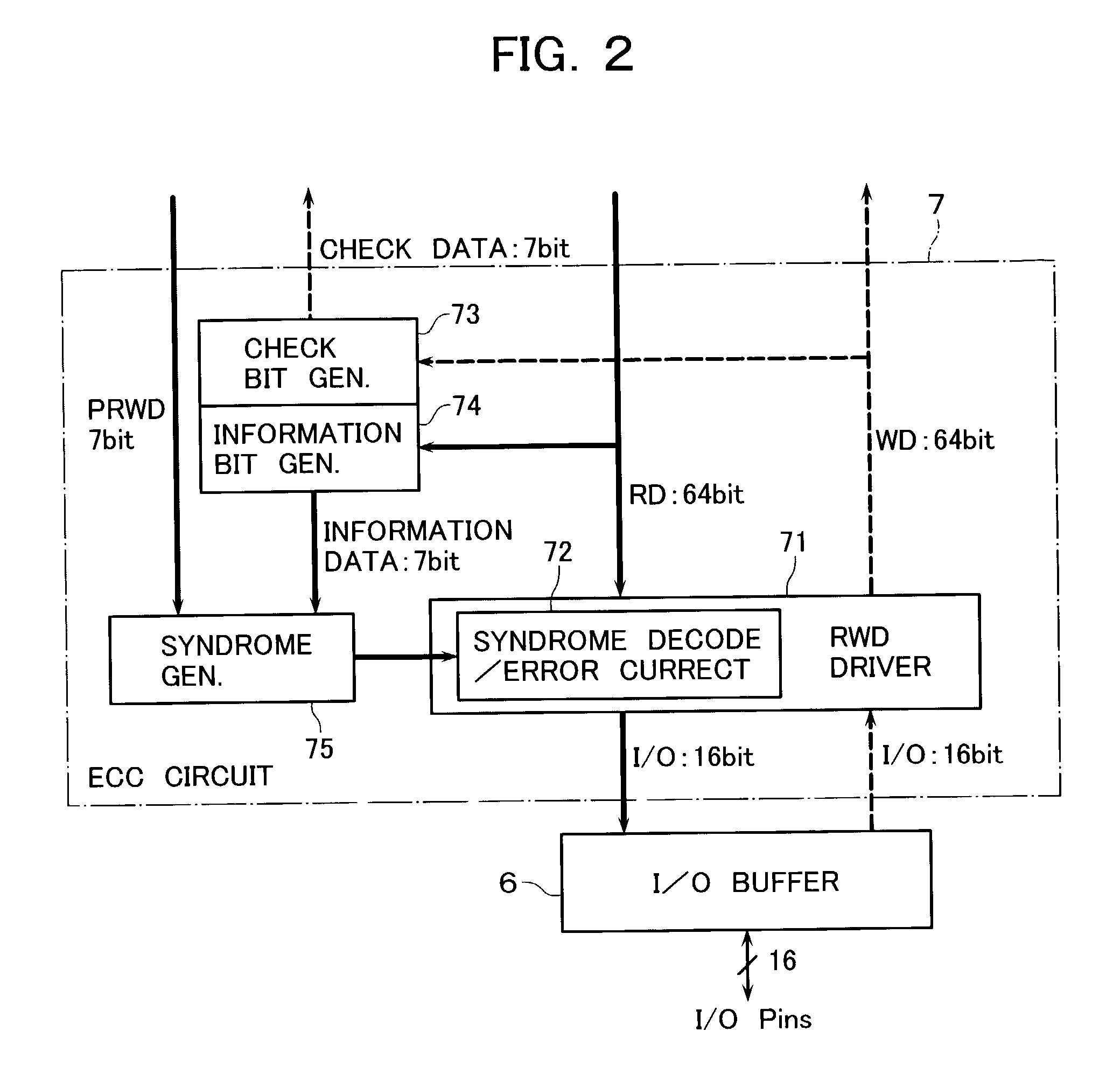Semiconductor memory device
a memory device and semiconductor technology, applied in the field of semiconductor memory devices, can solve the problems of psrams being used with the lack of address multiplexing, srams suffering from difficulties in achieving small size and large storage capacity, and becoming more difficult for memory cells of such semiconductor memories
- Summary
- Abstract
- Description
- Claims
- Application Information
AI Technical Summary
Benefits of technology
Problems solved by technology
Method used
Image
Examples
case 7 -
[0047] In case 7-bit check data is used as in the FIG. 2 embodiment, the Hamming-code check matrix and code are given as 7-digit binary numbers other than zero (0). At this time, while the syndrome signal is for obtaining a 1-bit error address of the check matrix, the syndrome decode circuit is preferably arranged to have a NOR / NAND configuration as shown in FIG. 7. This circuit configuration is preferable in view of the fact which follows: upon occurrence of errors of more than 2 bits, a 7-bit syndrome with all bits of "1"s can sometimes be generated; at this time, the use of circuitry for detecting and decoding only "1"s or "0"s of the syndrome would result in a plurality of inherently right data items being rewritten unintentionally.
[0048] More specifically the syndrome decoder is arranged including a parallel combination of a 3-input NAND gate G1 for detecting that all of the "1" data bits of a 7-digit syndrome signal are "1" and a 4-input NOR gate G2 for detecting that its "0" ...
PUM
 Login to View More
Login to View More Abstract
Description
Claims
Application Information
 Login to View More
Login to View More - R&D
- Intellectual Property
- Life Sciences
- Materials
- Tech Scout
- Unparalleled Data Quality
- Higher Quality Content
- 60% Fewer Hallucinations
Browse by: Latest US Patents, China's latest patents, Technical Efficacy Thesaurus, Application Domain, Technology Topic, Popular Technical Reports.
© 2025 PatSnap. All rights reserved.Legal|Privacy policy|Modern Slavery Act Transparency Statement|Sitemap|About US| Contact US: help@patsnap.com



